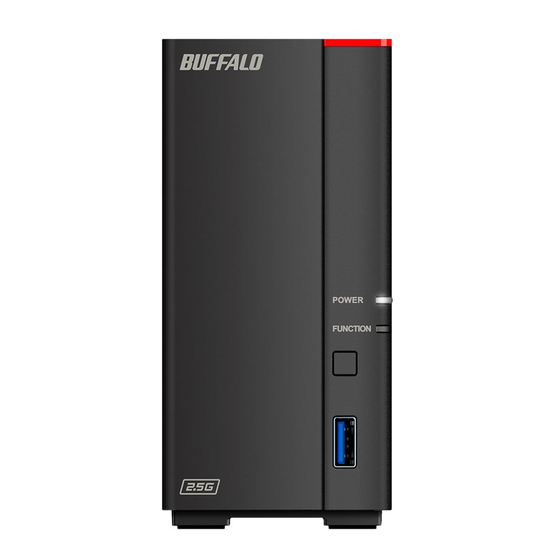
Table of Contents
Advertisement
Quick Links
Network Attached Storage
LinkStation 700
User Manual
Please make sure to read this manual before using and follow the procedures. If you have any inquiries about
the product, contact the number on the warranty statement or the packing box. Do not discard the included
documents, the warranty statement, or the packing box.
www.buffaloamericas.com
35022143-05
July 2021
Advertisement
Table of Contents
















Need help?
Do you have a question about the LinkStation 700 Series and is the answer not in the manual?
Questions and answers
I cannot install the device
To install the Buffalo LinkStation 700 Series, follow these steps:
1. Turn on the device: Move the power switch to the "On" position to power on the LinkStation.
2. Connect to the network: Connect the LinkStation to your network using an Ethernet cable.
3. Use NAS Navigator2: Launch NAS Navigator2 software on your computer to detect the LinkStation.
4. Access Settings: Open a web browser and log in to the LinkStation’s Settings using the IP address shown in NAS Navigator2.
5. Initialize if needed:
- If using a USB initialization drive:
1. Turn off the LinkStation.
2. Insert the USB memory device created for initialization into a USB 3.2 Gen 1 port.
3. Turn the device back on to start initialization.
- If USB initialization fails, initialize from the Settings menu.
6. Complete setup: Follow on-screen prompts to complete the setup and configuration.
Do not unplug the AC adapter before proper shutdown. To turn off, move the power switch to "Off" and wait for the power LED to turn off.
This answer is automatically generated
Cannot connect LS720D to my windows computer or TP-Link router
You can connect your Buffalo LinkStation 700 Series LS720D to a Windows computer or TP-Link router using a wired or wireless Ethernet connection. The device supports Windows PCs and is compatible with Windows 10 and 8.1. Connect the LS720D to your router (such as a TP-Link router) using an Ethernet cable, then access it from your Windows computer over the same network.
This answer is automatically generated
s the Buffalo Link Station LS720D1602-us compatible with Windows 11?
Can I use Jellyfin with my LinkStation 710